
 The newsletter of NASA's Radio JOVE Project
The newsletter of NASA's Radio JOVE Project"Solar and Planetary Radio Astronomy for Schools"

 The newsletter of NASA's Radio JOVE Project
The newsletter of NASA's Radio JOVE Project
In 2019, I finally got a chance to share my love of building radio telescopes with my college students. Even more exciting, they got a chance to lead a team of high school students in building and testing a Radio JOVE.
Access Academy is a collaboration between Saint Anselm College and Manchester City Public Schools. Through the Academy high school students from groups typically underrepresented in higher education have an opportunity to work on a hands-on, immersive project taught by college students. That year, we had secured funding from the National Science Foundation to offer several STEM courses with the goal of giving college STEM majors an early teaching experience.
I asked for two of my undergraduate instructors to write a bit about their experience learning, teaching, and building at the same time.
Ana Morrison
Going into the “Radios for Jupiter” class I had never taken any classes related to astrophysics, and it had been four years since I had taken the introduction to physics class required by my high school as a prerequisite for graduation. Given that I had such little background in the topic, I found it especially daunting to enter a position where I would not only be required to be familiar with the information at a basic level, but I would be responsible for analyzing this information and conveying it to the high school students in a manner that didn’t just seem like lists of numbers and hypothetical equations. And on the first day, I was absolutely confounded by the knowledge that the students already had and their excitement for what we would be doing in the “Radios for Jupiter” class.
In order to cover as much ground as possible, the class was divided into four parts with each college coordinator handling one aspect of the building process. During this time, it was my job to teach the students how to operate and calibrate the receiver that we used to collect data as well as the Radio-SkyPipe software that they would be using to map our findings. I did this by reading over the manuals provided by NASA for the Radio JOVE project, piecing together what each part of the receiver was, and the most effective way to operate and assemble the receiver, the calibrated noise source, and the software on the computer.
Instead of going over the information directly from the manuals, I chose to explain and demonstrate what each component of the system was and what its function is and each student was encouraged to ask any questions that they had about the process or the components of the receiver setup. After the initial demonstration, the students were given the opportunity to acquaint themselves with each of the parts that we would be using and were asked to set up the system on their own to the best of their ability, eventually learning the correct technique by means of trial and error.
The most essential part of the whole process for me was seeing two of the students that I worked with in my group work together and set up the receiver, calibrated noise source, and computer software completely on their own and to see how impressed they were with themselves and their fellow classmates when they were able to see data from their telescope come across the screen of the computer.
Lindsay Yurek:
A professor of mine once told me that her teaching philosophy is to always consider herself as a learner among learners. This philosophy will always stick with me, especially as I pursue a degree in Secondary Education and Natural Science. So when I was approached to teach a class to students in need of high school credit I was eager to start. The class was called Radios for Jupiter, and I had no prior knowledge about Radio JOVE, nor astronomy. I was truly going to be learning with the students! I was lucky enough to share this teaching experience with three other college students and guidance from our professor.
As a class, we explored the electromagnetic spectrum, had the students create posters on each different wave, looked at articles about Jupiter, and watched videos that captured the building process and completion of different telescopes including Radio JOVE. As the weeks went on, and the students, including myself, gained more knowledge in this specific field, we began the building process of our own telescope. We broke the class of seventeen students into four groups. Two groups assembled the telescope, while the other two groups learned how to interpret the data and set up the receiver. My favorite part was seeing the students look at the data and start thinking about what it meant. They asked so many questions and I loved helping them solve the answers even if it meant discovering them together!
Assembling Radio JOVE was hard work, but it was so important for the students to be able to learn about astronomy in a different way. As a future teacher, the hands on experience the students had was something you can’t teach by just a textbook. These students walked away with new knowledge and a different perspective of school and I will be forever grateful to be part of something so unique and special.
We installed the Radio JOVE in the last week of the program, and the instrument detected a solar flare just days before their final presentation! As someone who has worked in radio astronomy instrumentation, I think it’s so powerful to be a part of the construction process in order to really understand your instrument and the science that you can do with it. Our project is currently on hiatus with the pandemic, but I look forward to introducing more students to radio astronomy with this great tool!
Photos by Nicole Gugliucci
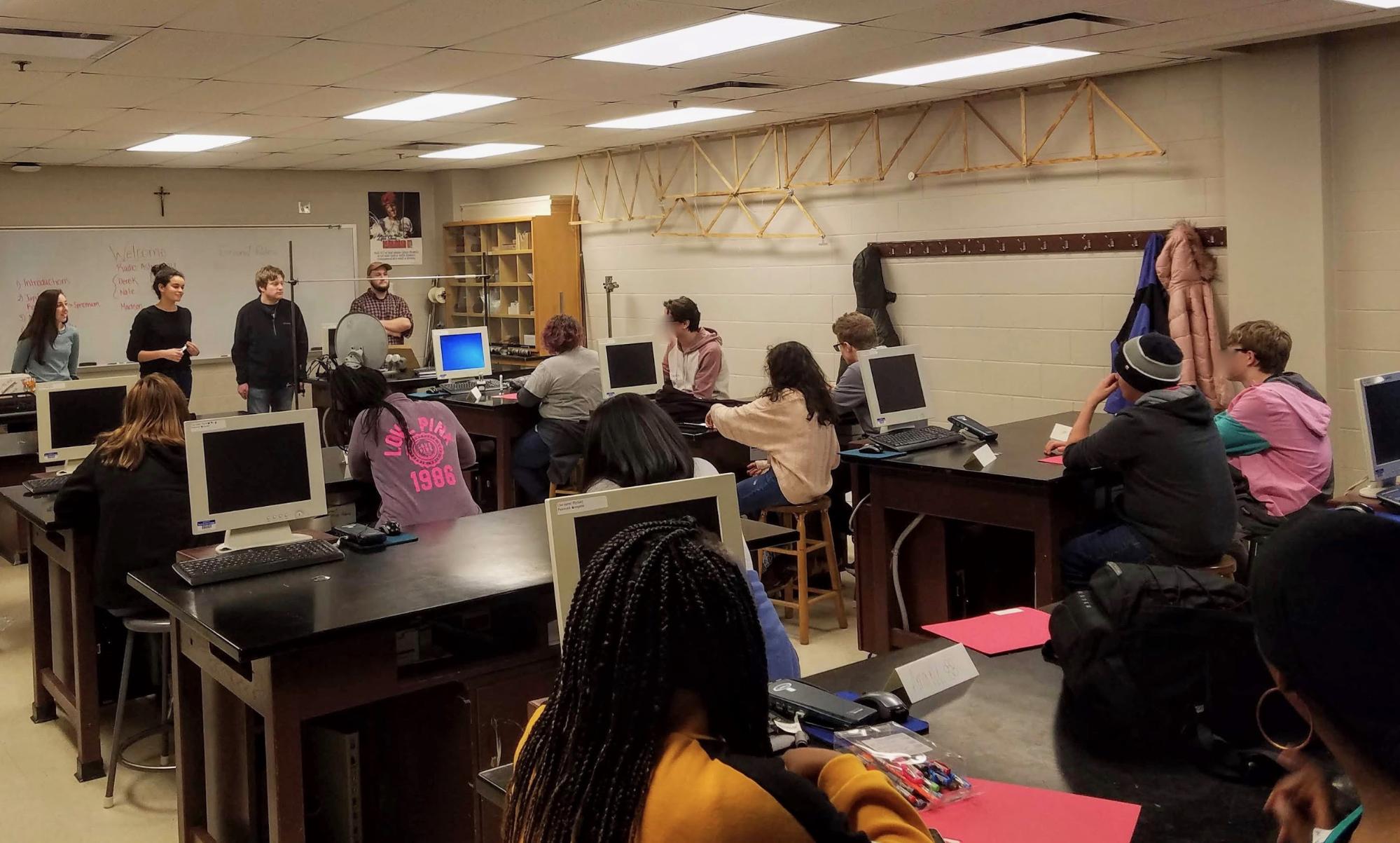
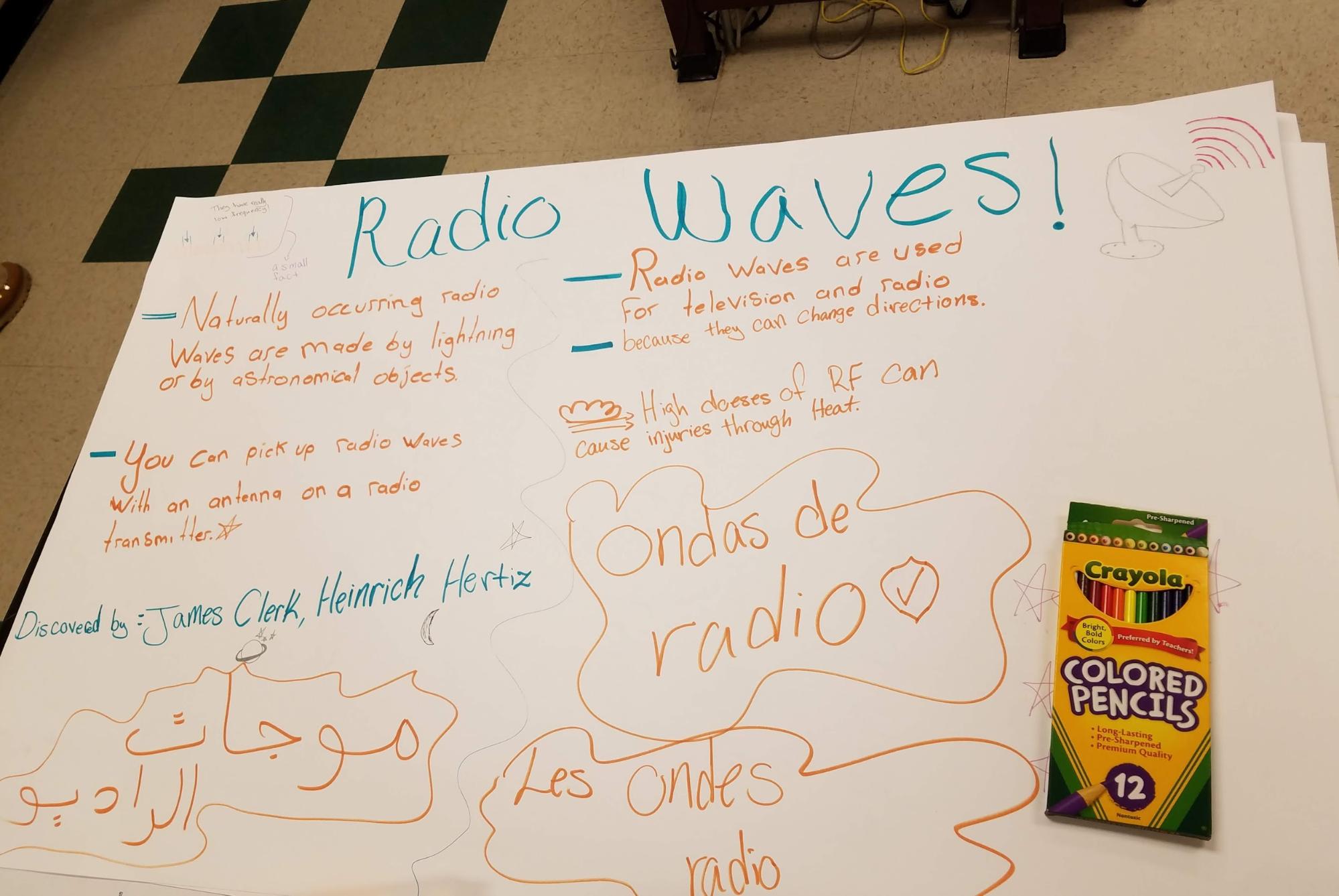
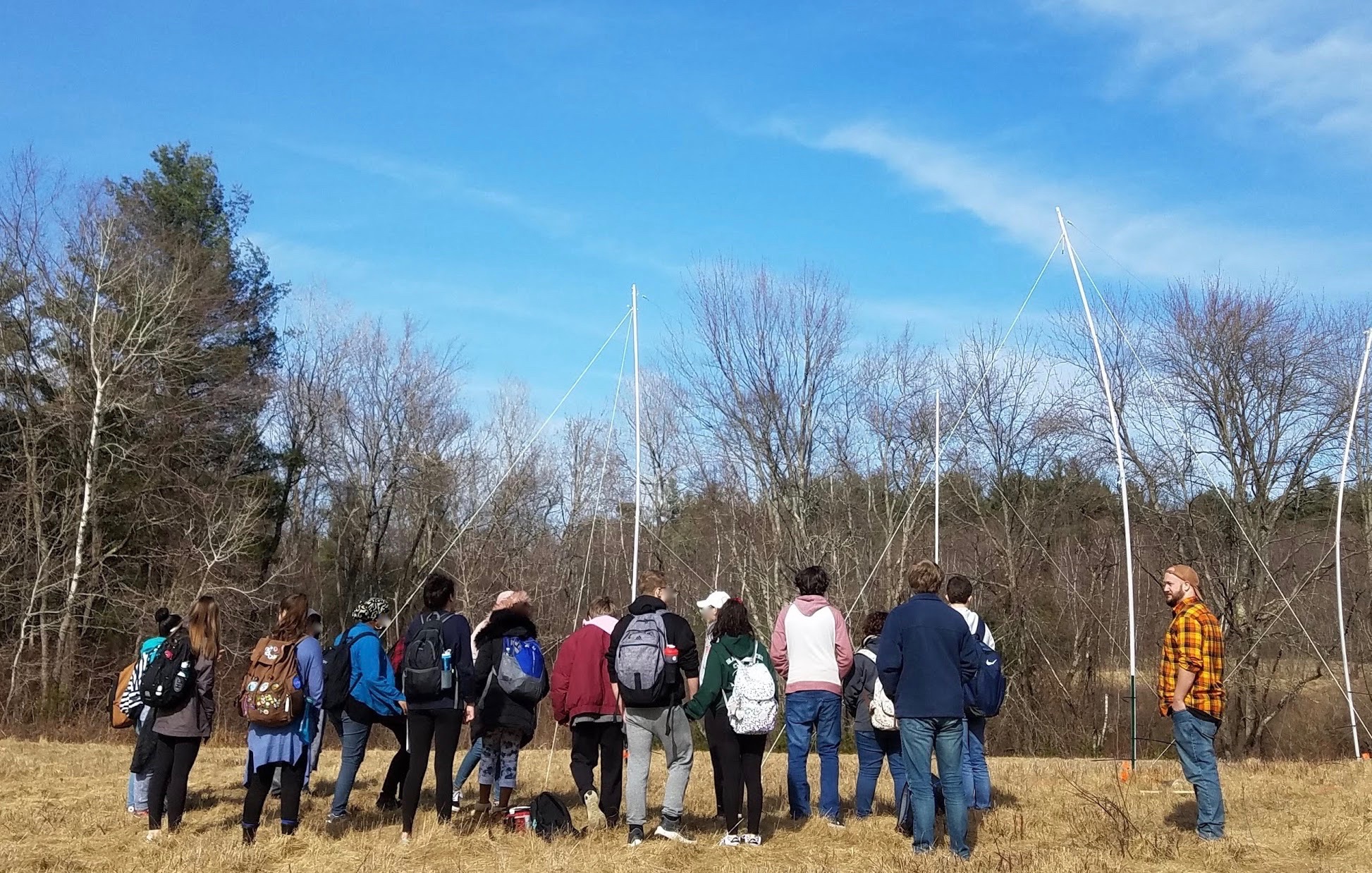
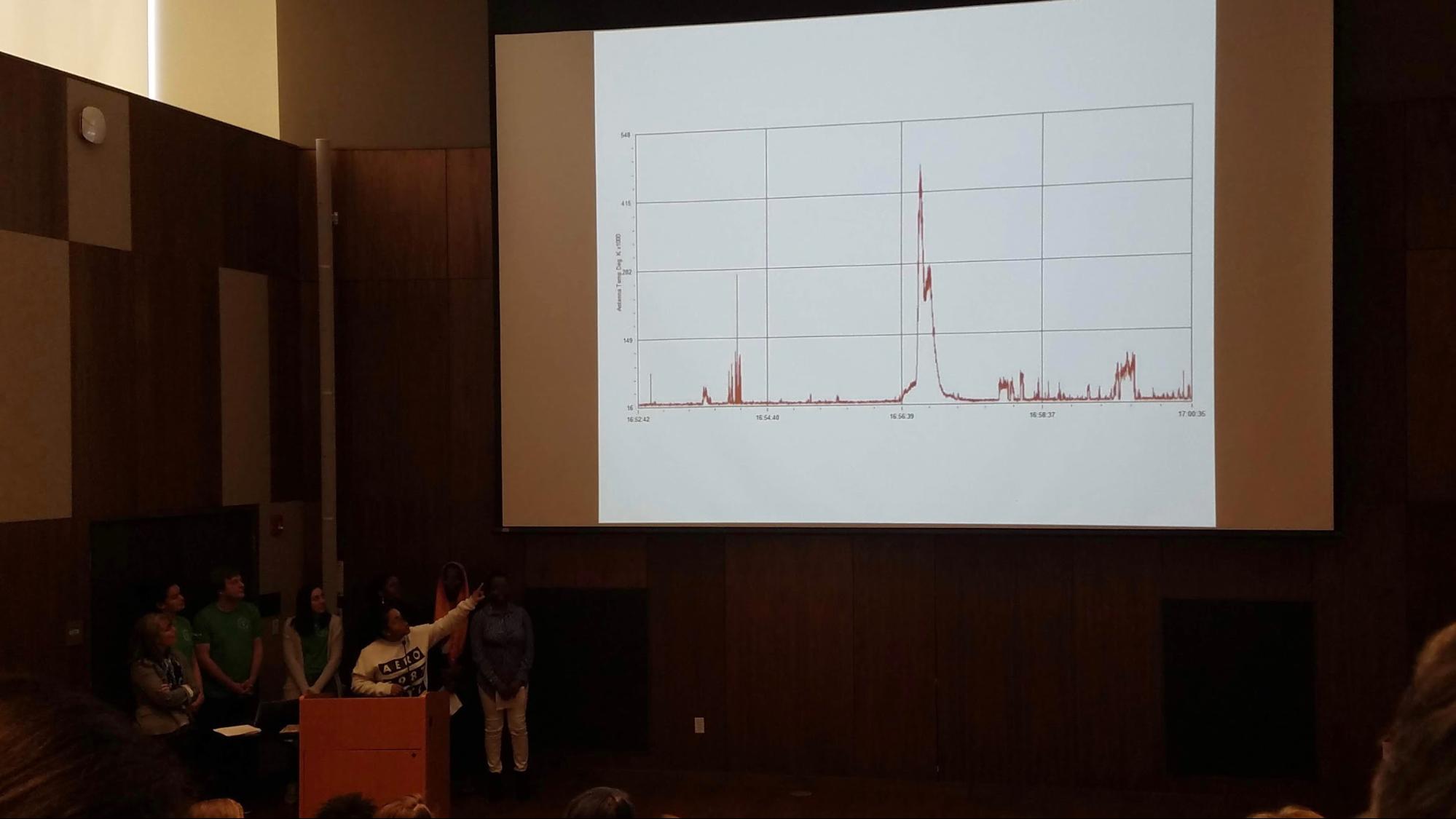
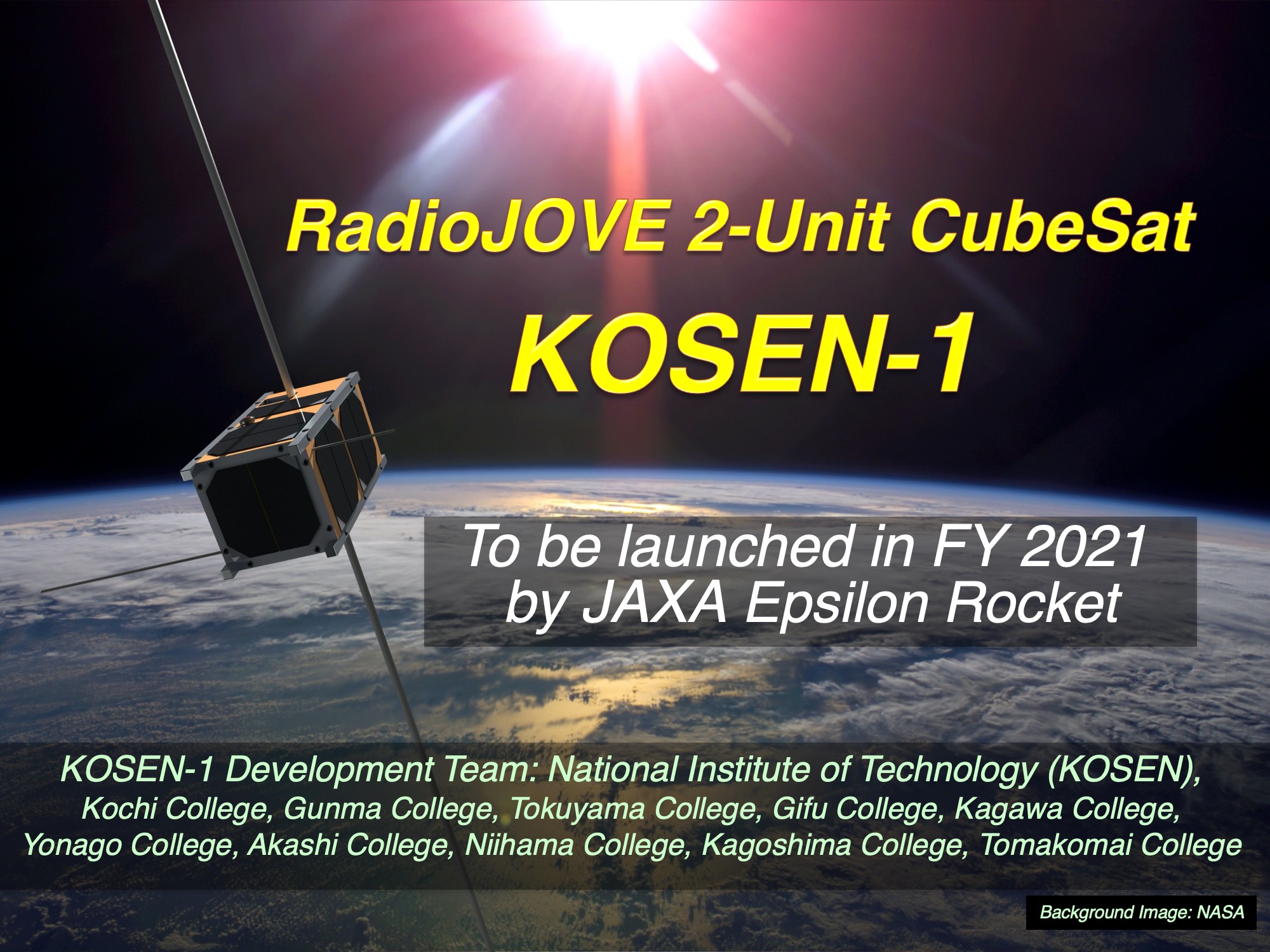
Our CubeSat project organized by 10 colleges of the National Institute of Technology (KOSEN) in Japan was selected as a CubeSat candidate for JAXA's Innovative Satellite Technology Demonstration-2. This 2-Unit CubeSat, named KOSEN-1, is planned to be launched by a JAXA Epsilon Launch Vehicle in FY 2021. KOSEN-1 will demonstrate three new spaceborne technologies for the CubeSat system:
[Editors Note: RFI is a big problem for Radio JOVE observers. It is often difficult to track down the causes. In past Radio JOVE Bulletins we have included articles on indoor grow lights (see JOVE Bulletin December 2015 issue) and have included a collection of common sounds (courtesy of the American Radio Relay League - ARRL) that may plague your systems and what those culprits might be (see the Bulletin June 2016 issue). On the Amateur Radio Astronomy blog there are great articles on RFI Basics and how you can build your own RFI Sniffer. This month we include in the Radio JOVE Bulletin another possible cause of interference, LED lights.]
I am reporting a recent RFI that occurred at my location. The discovery was noted one evening when a baseline tracing change occurred after turning on and off recessed LED lights in my kitchen (see Figure 1). My station had been plagued intermittently for several weeks. It took me quite some time to make the connection. The findings are reproducible. Replaced the LED bulbs with halogen with no recurrence. Please note photographs of the culprit bulb (see Figure 2 and 3). Hopefully this information will help cure some pesky RFI.
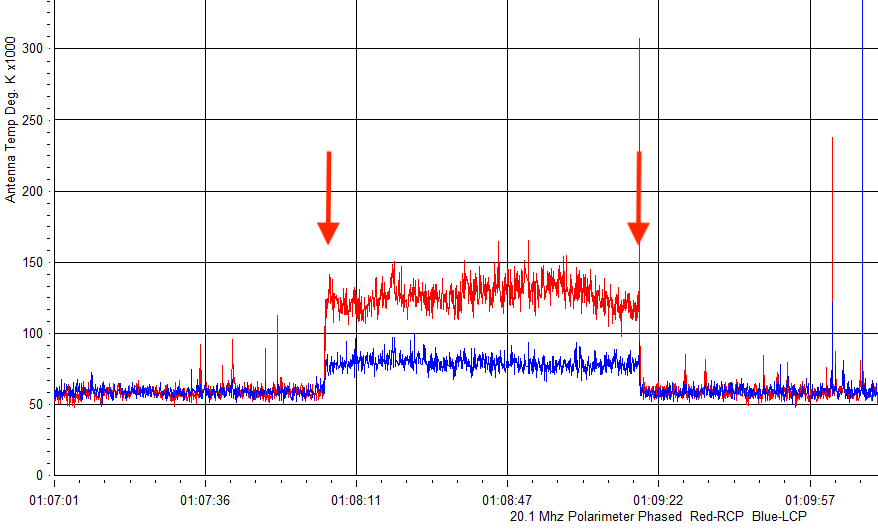
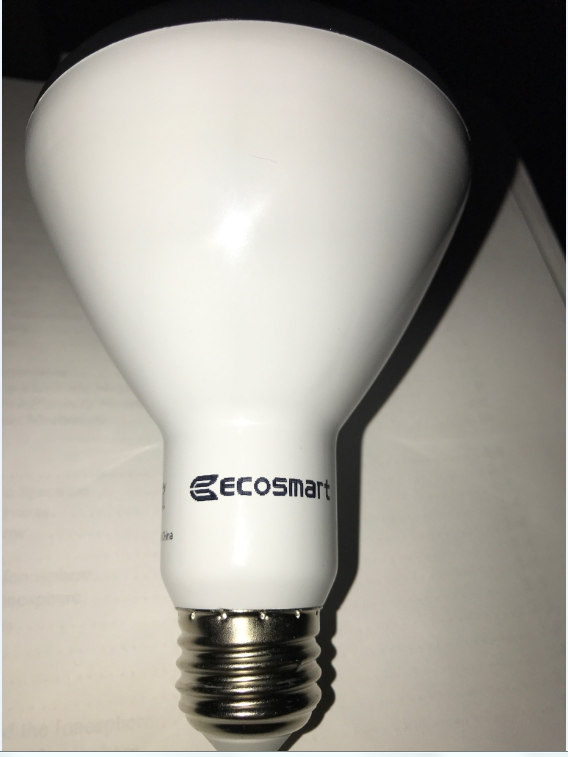
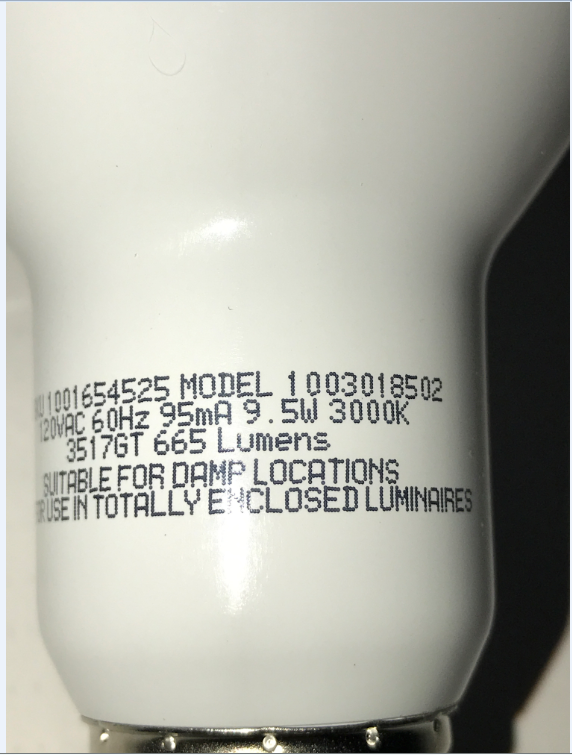
NASA and NOAA have announced that the start of Solar Cycle 25 appears to have begun. See the NASA Press Release for more details. This might be good news for Radio JOVE observers because more solar activity means more opportunities to detect Solar Radio Bursts on your Radio JOVE receivers.
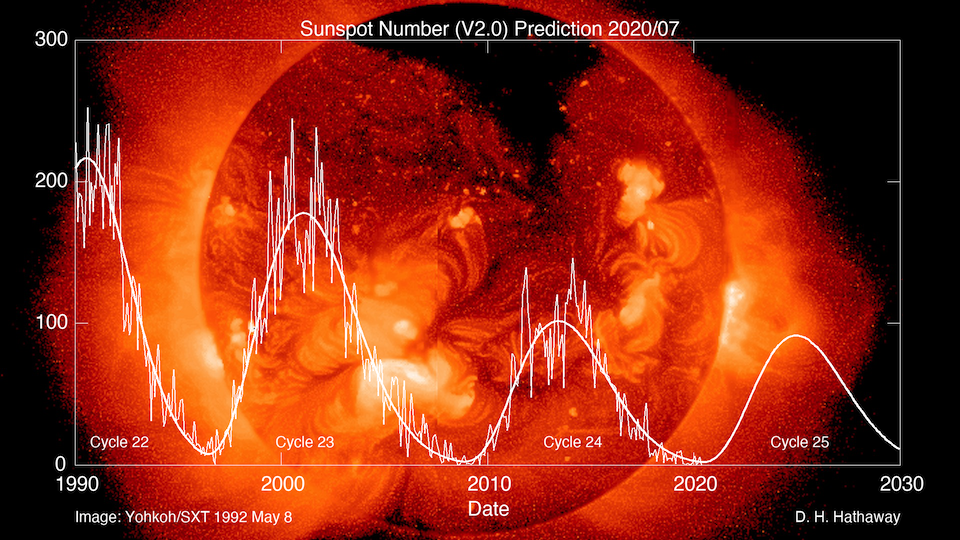
The JOVE Bulletin is published twice a year. It is a free service of the Radio JOVE Project. We hope you will find it of value. Back issues are available on the Radio JOVE Project Web site, http://radiojove.gsfc.nasa.gov/
For assistance or information send inquiries to:
or
